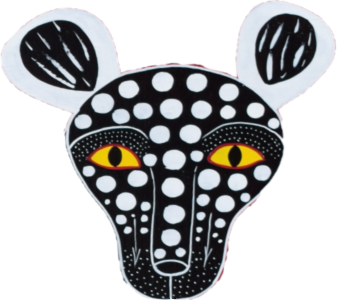August 09, 2023
Introduction
African art is a treasure trove of culture, history, and symbolism. One of the recurring motifs in African paintings is the depiction of fish and other aquatic life.
These aquatic creatures hold a special place in the hearts of many African communities, often symbolizing fertility, prosperity, and the interconnectedness of life.
In this blog post, we will delve into the types of fish typically painted in African artworks, exploring their meanings and the cultural significance they carry.
- Tilapia - Symbol of Fertility and Abundance
Tilapia fish, prominently featured in African paintings, symbolize fertility and abundance owing to their prolific nature. Thriving in diverse freshwater habitats across the continent, their rapid reproduction serves as a metaphor for prolific growth. Depictions of tilapia in artworks are deeply intertwined with cultural sentiments, often expressing wishes for a prosperous and fruitful life. Beyond a mere artistic motif, these paintings carry a profound cultural resonance, underscoring the significance of water bodies in sustaining life throughout Africa. The portrayal of tilapia in African art serves as a powerful nod to the interconnectedness between aquatic life and the broader narrative of abundance and vitality in the continent's diverse cultures.
- Catfish - Guardians of Tradition and Ancient Wisdom
Catfish hold a unique place in African mythology and spirituality. In some African cultures, catfish are believed to possess ancient wisdom and are revered as guardians of cultural traditions. Catfish motifs in paintings often symbolize a connection to ancestral knowledge and the importance of preserving cultural heritage. Their appearance in artworks serves as a reminder of the deep respect African communities hold for their history and ancestral roots.
- Nile Perch - Signifying Strength and Transformation
The Nile Perch is a powerful and predatory fish found in African lakes and rivers. It is often portrayed in artworks to symbolize strength, resilience, and transformation. Just as the Nile Perch adapts to various environments, African societies have historically exhibited adaptability and strength in the face of challenges. The inclusion of Nile Perch motifs in paintings reflects a desire for personal and communal growth through adversity.
- Mudfish - Emblematic of Adaptation and Survival
Mudfish, also known as lungfish, are known for their ability to survive in both aquatic and terrestrial environments. In African art, mudfish represent adaptability, survival, and versatility. These paintings are often associated with the concept of overcoming obstacles and finding ways to thrive in different circumstances. Mudfish motifs are particularly relevant in societies where resilience and resourcefulness are highly valued.
- Arowana - Portraying Elegance and Aspiration
The Arowana, a fish known for its graceful movement and striking appearance, is sometimes depicted in African paintings to symbolize elegance, aspiration, and beauty. These paintings often convey a sense of striving for higher goals and reaching for one's dreams. The Arowana's depiction is a reminder of the pursuit of excellence and the celebration of individual and collective achievements.
Conclusion
The presence of fish motifs in African paintings underscores the deep connections between culture, nature, and spirituality. Each type of fish carries its own symbolism, representing values such as fertility, wisdom, strength, adaptability, and aspiration.
Through these paintings, African artists celebrate the multifaceted nature of life, the challenges faced by communities, and the triumphs achieved over time.
As we appreciate these vibrant aquatic portrayals, we gain a deeper understanding of the intricate tapestry of meanings that enrich African art and culture.
In addition to their artistic value, African paintings with fish motifs provide a fascinating glimpse into the deep connections between culture, nature, and spirituality.
Each fish species depicted carries its own symbolism, representing important values like fertility, wisdom, strength, adaptability, and aspiration.
Explore our diverse collection of meticulously crafted African paintings, featuring a captivating array of fish motifs that symbolize fertility, wisdom, strength, transformation, and more.
Our online platform offers a unique opportunity to connect with the rich cultural heritage of Africa, as we showcase exquisite African paintings depicting not only fish but also tortoises, frogs, and other aquatic creatures. With global shipping available, art enthusiasts from around the world can now bring the allure of African aquatic symbolism into their homes.
What's more, our commitment to quality extends beyond artistry – in most countries, the import of these handmade paintings is duty-free, making it easier than ever to adorn your space with the evocative beauty of African aquatic art. Immerse yourself in the stories these paintings tell and embrace the spirit of Africa's vibrant artistic heritage today.


